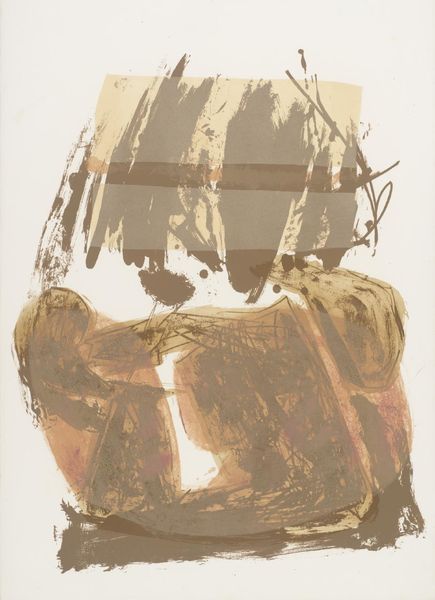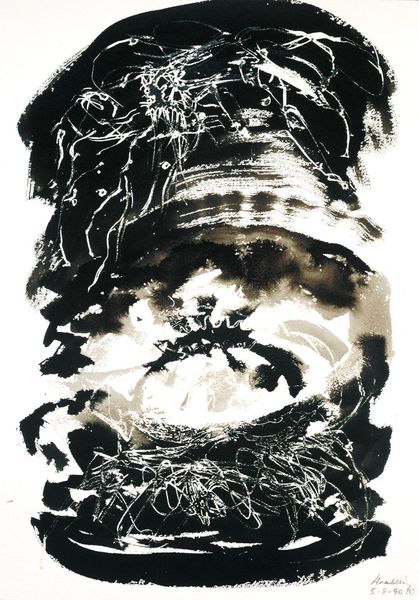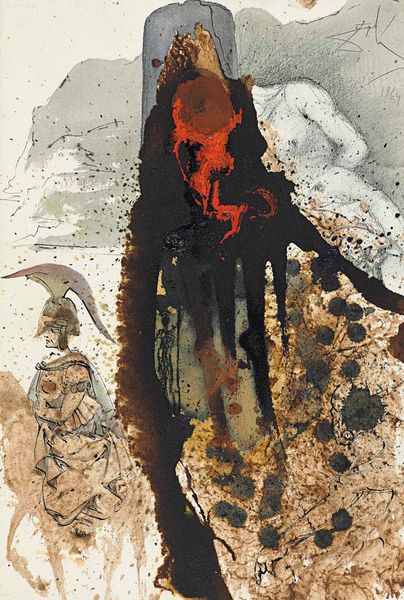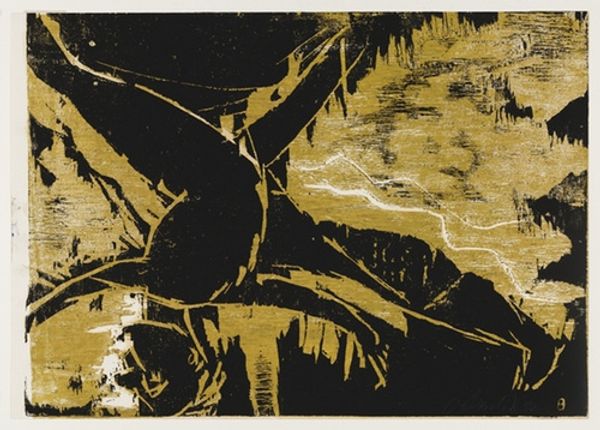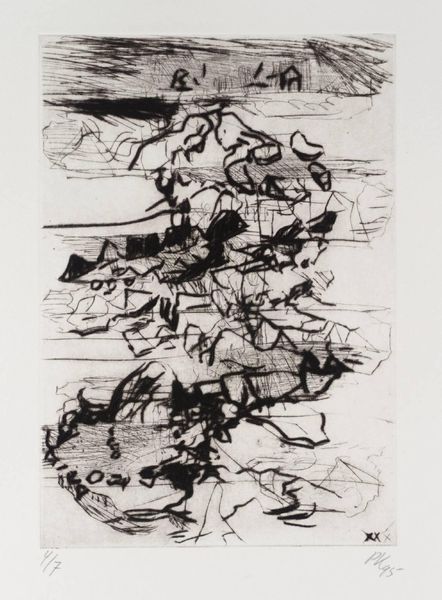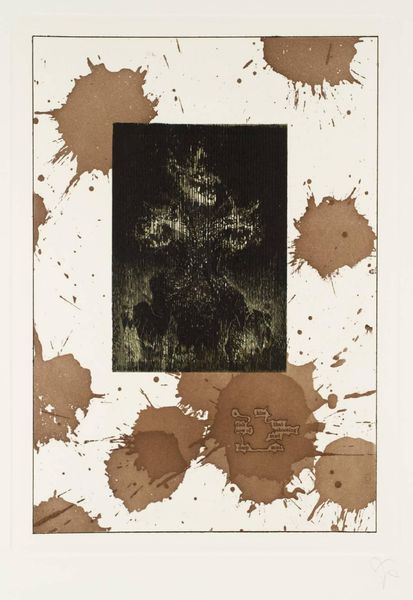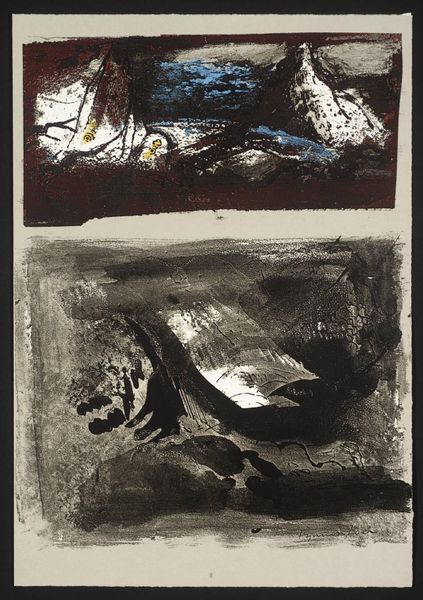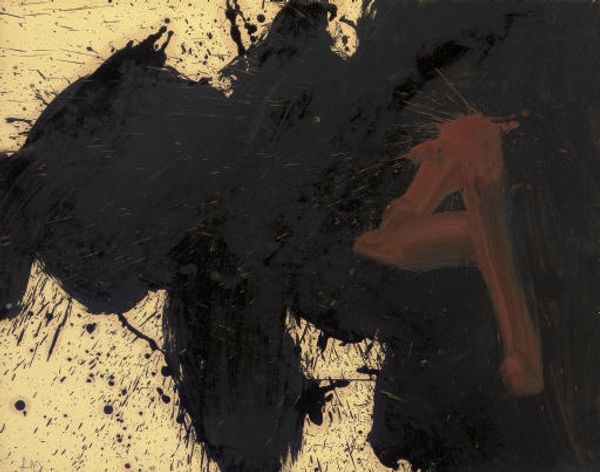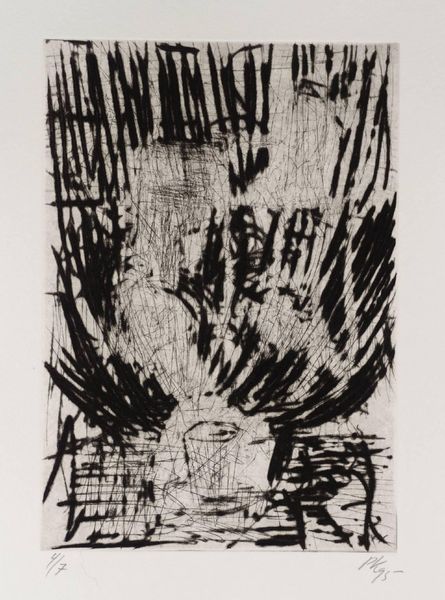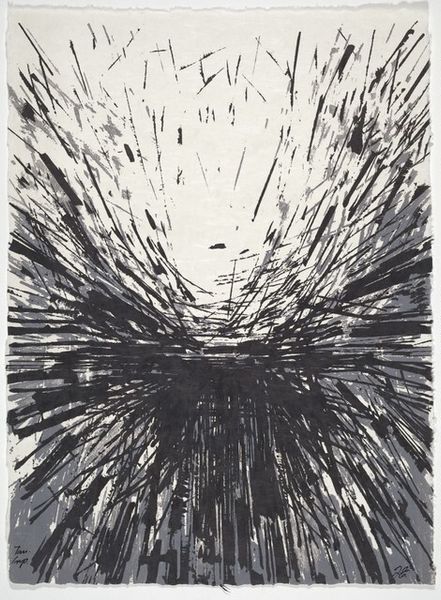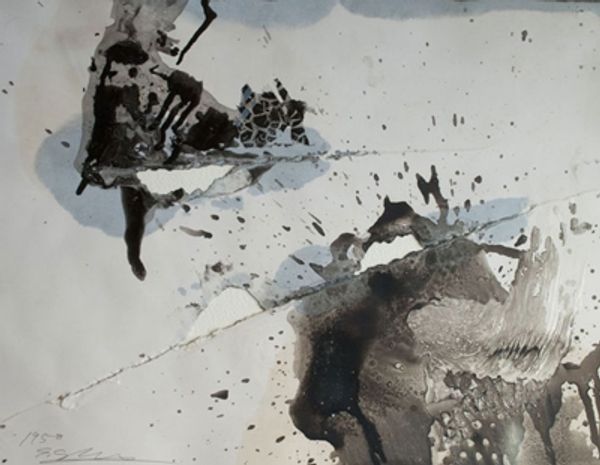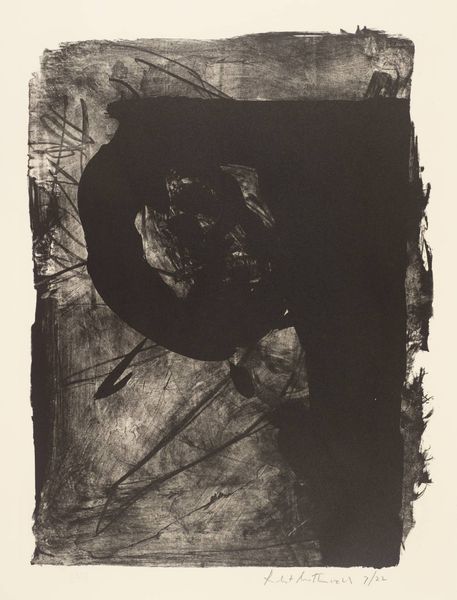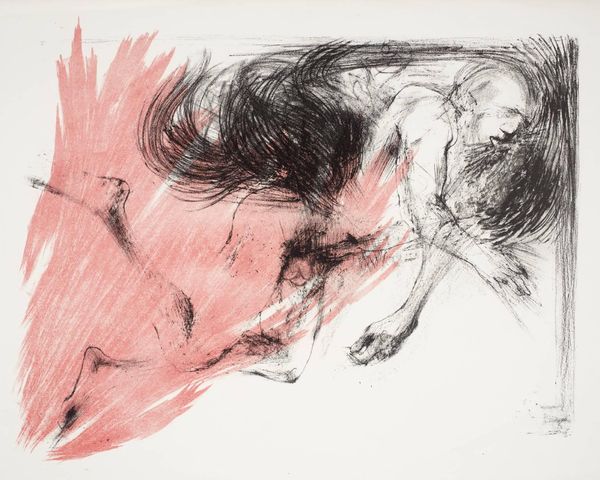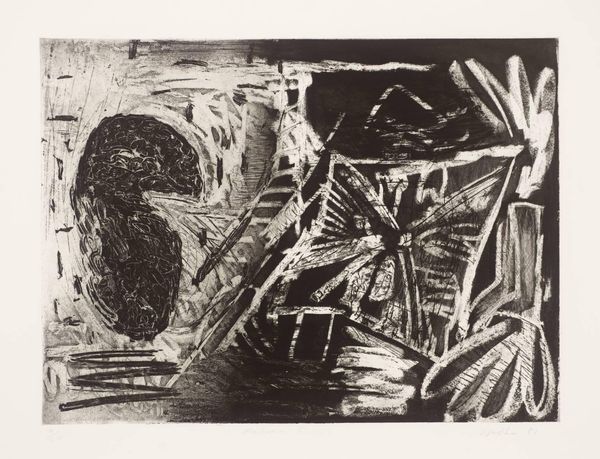
Dimensions: image: 1040 x 752 mm
Copyright: © Bill Meyer | CC-BY-NC-ND 4.0 DEED, Photo: Tate
Curator: Bill Meyer’s “Stoned, Untimed Gap” presents an intriguing juxtaposition of textures and forms. It’s part of the Tate collection, a lithograph measuring just over a meter in height. What are your initial impressions? Editor: Well, the upper part feels explosive, almost violently energetic, while the lower section is grounded, still, and somewhat melancholic. It’s a striking contrast. Curator: That stark contrast is key. Meyer often explores the intersection of the natural and the constructed. The lithographic process lends itself to this contrast, marrying photographic realism with gestural abstraction. Editor: Indeed. The “stoned” element in the title, combined with the untimed gap, makes me think about the erosion of memory, the way details become obscured over time. The stone and the ambiguous brown smudge at the top become symbols of that forgotten past. Curator: It’s a work that reflects on the socio-political impact on our perception, doesn't it? The very idea of a gap in time suggests a rupture, a moment of historical or personal forgetting. Editor: Absolutely. It’s a work that invites prolonged contemplation, a meditative space carved out from the chaos. Curator: It’s a fitting end to our tour, a reminder of how artists can illuminate the hidden corners of our collective consciousness.
Comments
tate 6 months ago
⋮
http://www.tate.org.uk/art/artworks/meyer-stoned-untimed-gap-p20226
Join the conversation
Join millions of artists and users on Artera today and experience the ultimate creative platform.
tate 6 months ago
⋮
Gapscape is a portfolio consisting of thirteen prints, produced by the artist in an edition of sixty. Tate owns the artist’s proofs of five of the prints from the suite. Meyer lived in New York and London for seven years during the 1970s. Gapscape was made on his return to his native Melbourne, Australia in 1979.
